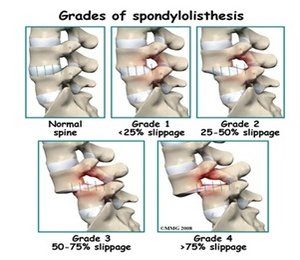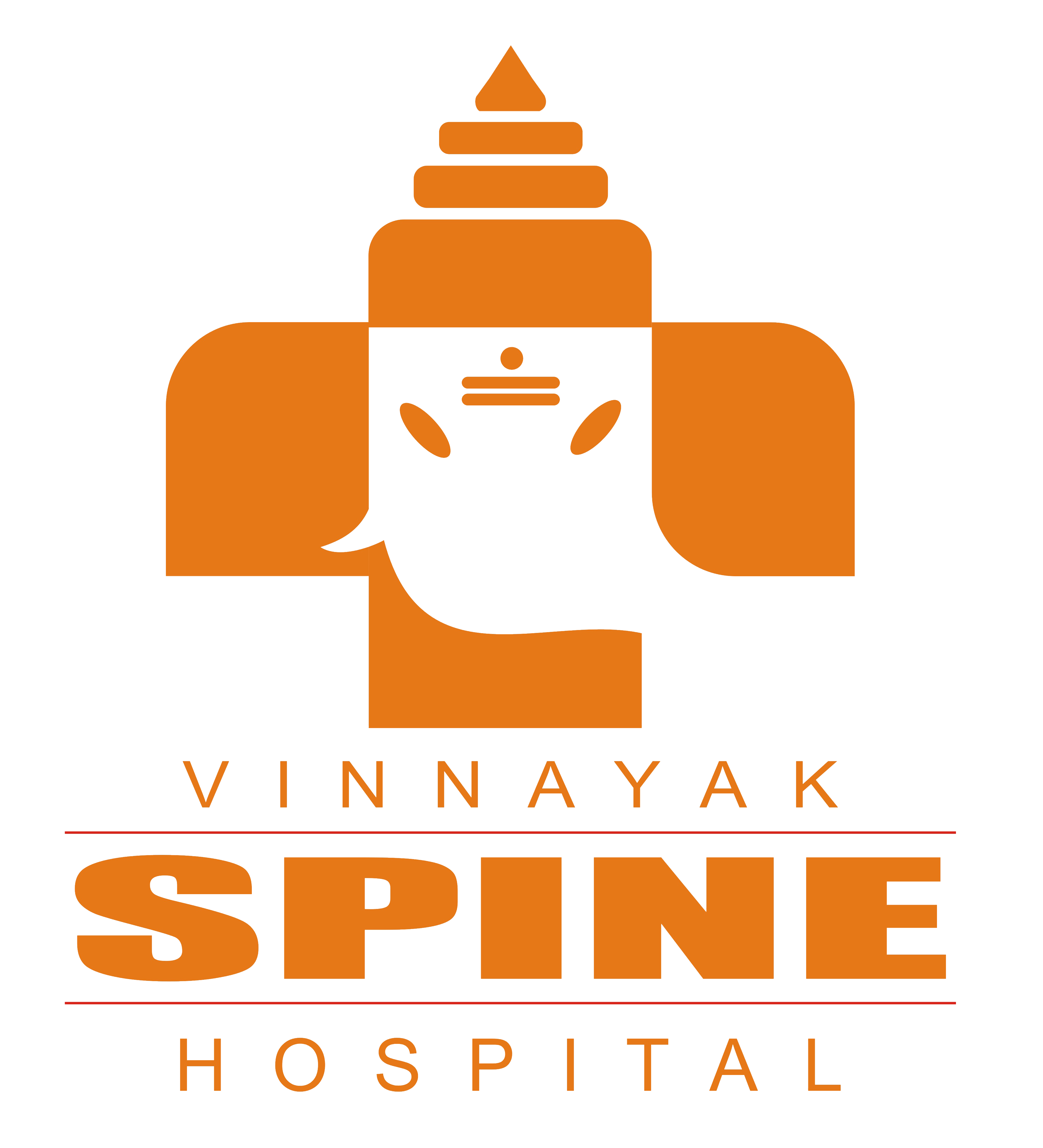Spondylolisthesis
What is spondylolisthesis?
 The word means spondylo = spine, listhesis = to slip. It is slippage of a vertebra over the other.
The word means spondylo = spine, listhesis = to slip. It is slippage of a vertebra over the other.
This slip is seen in lower lumbar spine i.e. between L4-5, L5-S1, L3-4, Other Sites.
But this listhesis can be seen so commonly in cervical spine (sometimes dorsal spine also) after major trauma.
What is the actual reason of this lumbar slip?
There is a weak connection between two vertebrae causing spine instability resulting in slip.
What are the symptoms or complaints of a patient with spondylolisthesis?
Symptoms are very similar to slip disc patients. Reason of back pain is abnormal movements due to spine instability. While the reason for leg pain is nerve pinch resulting from the slip.
How a diagnosis of spondylolisthesis is confirmed?
Similar to slip / herniated disc, the diagnosis is always made by proper history (i.e. complains), check by a spine specialist and confirmed by MRI report. X-ray has great importance.
How to decide further treatment in case of spondylolisthesis?
Similar to slip disc if problem is milder then conservative treatment is answer.
Surgical treatment of a spondylolisthesis may be recommended if patient has any one of these:
♦ Significant neurological deficit
♦ Severe pain affecting simple daily activities
♦ Failure of conservative modalities
♦ Significant muscle weakness
Any evidence of cauda equina syndrome
What is the surgery done for spondylolisthesis?
Surgery is standard and simple. It involves the removal of nerve pinch or pressure – this helps in improving the leg pain. Also, it involves stabilization of the unstable spine by fixation with the help of a plates/rods and screws. This can help in complete relief and restoring normal functions later.
Are rod and screws harmful to me? When it should be removed?
Not at all. This actually is so helpful that it immediately gives good relief, and moreover, they are customized for use for stabilizing spine only, and not used for any place or part of the body. Second surgery for removal is not required as the patient usually is so comfortable and does not have any pain or heaviness due to metal weight. After this surgery, patients are so comfortable that they don’t feel that they have anything extra inside. A surgeon needs to tell them after surgery and actually prove it by showing on X-ray that metal implant is there.
Note: All other points about spondylolisthesis surgery are similar to slip/herniated disc (already explained above) i.e., after surgery pain, recovery, hospitalization period, restrictions, etc.
